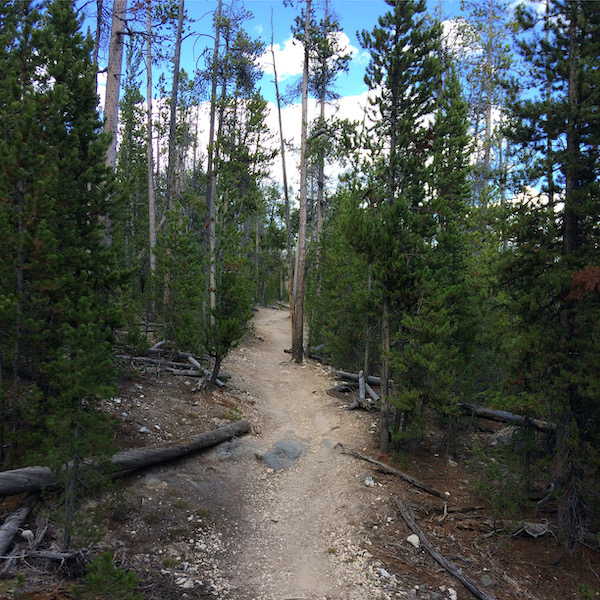
It was one of the first hikes we took together, my husband and I. It wasn’t long—only a few miles, but one long stretch was steep. The descent wasn’t bad, and the destination—a steel suspension bridge spanning a canyon in the middle of the wilderness—was worth the trip down and even back up. Still, that thigh-burning return haul reigns in my memory, especially when we consider taking any trail with the word “steep” in the description.
Swagged across the slope like twinkle-lights on a Christmas tree, the switchbacked Hellroaring Creek trail supposedly moderated the mountain face into a more manageable grade. I trudged up one swath, turned and took the next, and then the next. With every step, I tried to remember how many of these hairpin turns we’d made on the way down so I could gauge how much further it was back to the top.
Eventually, I just stopped. Not to rest—I’d already done that. I stopped to assess.
Ahead, the earthen path looked exactly the same as the ground we’d covered since the previous pivot, unchanged from what we’d been passing since we left the flats below. Dense lodgepole pines camouflaged the end of the trail, making it impossible to see how far it was to the top. I wondered if we’d ever get there, if our trudging was taking us anywhere, if we were making any progress at all.
Then I turned around.
Looking back, I could see the pine-covered mountains in the distance and the meadows dotting the valley below. While the end was still uphill and hidden among the trees, the terrain we’d already traveled was visible. No, we hadn’t reached the top but we’d come a long way.
By turning around I gained a clearer viewpoint about this steep stretch of the trail. Now, instead of desperately trying to determine where I was in comparison to my unseen destination, I compared where I stood to where I’d started and discovered that I had made progress. I still had a ways to go but I could see how far I’d already traveled. With that perspective came hope and renewed energy—just enough to help me keep my head up and my feet moving at a decent pace.
Recent conversations lead me to believe that most of us could use a little hope and renewed energy right about now. Am I right in thinking that, maybe, this is true for you, too? Maybe this would be a good time to pause for a few moments to turn around and take a look at the terrain you’ve been traveling.
Here’s what I’ve learned about intentionally looking back at the landscape of life: It’s not the act of turning around that’s hard. What takes effort is stopping to do it. It seems easier to just keep pushing forward. The practice of turning around doesn’t take long—just a few minutes—and every time I do, I learn something helpful or hopeful and am able to step back into my life with better perspective.
Whether you look at the past week, the past month, the school year so far, or the slog that has been 2020, here are three questions to get you started, questions I find to be helpful throughout the year, not just at the turn of the calendar.
3 Questions to Foster Hope
- Where am I in relationship to where I began? (This could be an actual location, a physical or emotional state, a decision, a situation, etc.)
- What kind of terrain have I been traveling? (along with this: What has God already brought me through?)
- What hopeful truth do I need to keep close as I resume moving toward my destination?
Happy trails ~
Natalie
* * * * *
I hope this was helpful to you. If you would benefit from regular encouragement to engage with your unique terrain so that you can navigate the landscape of your life by faith, consider subscribing for monthly(ish) posts like this one delivered right to your inbox. I’d be honored to have you join me.
This is an updated version of a previously published post.